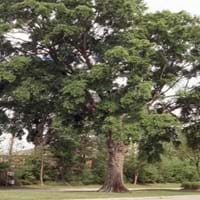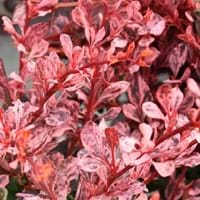Life Span
Perennial
Perennial
Origin
Southern Europe, Mediterranean, Northern Africa
Eastern Asia, Japan
Types
Not Available
Not Available
Habitat
Not Available
Old fields, stream banks
USDA Hardiness Zone
7-9
4-8
Sunset Zone
Not Available
A3, 2b, 3a, 3b, 4, 5, 6, 7, 8, 9, 10, 11, 12, 13, 14, 15, 16, 17, 18, 19, 20, 21, 22, 23, 24
Habit
Oval or Rounded
Oval or Rounded
Flower Color
Light Green
Yellow, Yellow green
Flower Color Modifier
Bicolor
Not Available
Fruit Color
Brown, Chocolate, Black
Red orange
Leaf Color in Spring
Light Green, Bronze
Light Green
Leaf Color in Summer
Gray Green, Dark Green
Green
Leaf Color in Fall
Gray Green, Dark Green
Purple, Orange, Burgundy, Crimson
Leaf Color in Winter
Gray Green, Dark Green
Not Available
Leaf Shape
Oblong or Lanceolate
Obovate
Plant Season
Spring, Summer
Spring, Summer, Fall, Winter
Sunlight
Full Sun, Partial Sun
Full Sun, Partial Sun
Growth Rate
Medium
Medium
Type of Soil
Loam, Sand
Clay, Loam, Sand
The pH of Soil
Acidic, Neutral
Acidic, Neutral, Alkaline
Soil Drainage
Average
Average
Bloom Time
Early Spring, Spring
Spring, Late Spring
Tolerances
Pollution
Pollution, Drought, Salt, Soil Compaction
Where to Plant?
Ground
Ground, Pot
How to Plant?
Grafting, Seedlings
Seedlings
Plant Maintenance
Medium
Medium
Watering Requirements
Average Water Needs, Do Not over Water, Requires regular watering
Requires regular watering during dry weather
In Summer
Lots of watering
Lots of watering
In Spring
Moderate
Moderate
In Winter
Average Water
Average Water
Soil pH
Acidic, Neutral
Acidic, Neutral, Alkaline
Soil Type
Loam, Sand
Clay, Loam, Sand
Soil Drainage Capacity
Average
Average
Sun Exposure
Full Sun, Partial Sun
Full Sun, Partial Sun
Pruning
Remove damaged leaves, Remove dead branches, Remove dead leaves
Remove damaged leaves, Remove dead branches, Remove dead leaves
Fertilizers
fertilize in fall, Nitrogen, Phosphorous, Potassium
All-Purpose Liquid Fertilizer
Pests and Diseases
Aphids, Disease free, Moth
Red blotch, Sunken patches
Plant Tolerance
Pollution, Shade areas
Drought
Flowers
Insignificant
Insignificant
Flower Petal Number
Not Available
Single
Foliage Texture
Fine
Medium
Foliage Sheen
Glossy
Matte
Allergy
sneezing, Vomiting, Watery eyes
Not Available
Aesthetic Uses
Cottage Garden
Borders
Beauty Benefits
Good for skin, Skin Problems
Not Available
Environmental Uses
Nesting sites for birds, Shadow Tree
Air purification
Medicinal Uses
Digestive, Skin irritation
Anthelmintic, Antibacterial, Antiseptic, Cancer
Part of Plant Used
Bark, Fruits, Wood
Fruits, Leaves
Other Uses
Charcoal, Used as firewood, Used for its medicinal properties, Wood is used fore making tools
Used to make yellow dye
Used As Indoor Plant
No
No
Used As Outdoor Plant
Yes
Yes
Garden Design
Screening / Wind Break, Shade Trees, Street Trees
Edging, Foundation, Hedges, Mixed Border, Rock Garden, Wall
Botanical Name
QUERCUS laurifolia
BERBERIS thunbergii
Common Name
Darlington Oak, Diamond-leaf Oak, Laurel Oak, Laurel-leaf Oak, Swamp Laurel Oak, Water Oak
Japanese Barberry
In Hindi
Quercus
Japanese Barberry
In German
Quercus
Thunberg-Berberitze
In French
Quercus
Berberis thunbergii
In Spanish
Quercus
Berberis thunbergii
In Greek
Quercus
Japanese Barberry
In Portuguese
Quercus
Japanese Barberry
In Polish
Quercus
Berberys Thunberga
In Latin
Quercus
Japanese Barberry
Phylum
Magnoliophyta
Magnoliophyta
Class
Magnoliopsida
Magnoliopsida
Order
Fagales
Ranunculales
Family
Fagaceae
Berberidaceae
Clade
Angiosperms, Eudicots, Rosids
Angiosperms, Eudicots
Tribe
Not Available
Not Available
Subfamily
Not Available
Not Available
Number of Species
Not Available
Not Available
Importance of Water Oak and Rose Glow Barberry
Want to have the most appropriate plant for your garden? You might want to know the importance of Water Oak and Rose Glow Barberry. Basically, these two plants vary in many aspects. Compare Water Oak and Rose Glow Barberry as they differ in many characteristics such as their life, care, benefits, facts, etc. Every gardener must at least have the slightest clue about the plants he wants to plant in his garden. Compare their benefits, which differ in many ways like facts and uses. The medicinal use of Water Oak is Digestive and Skin irritation whereas of Rose Glow Barberry is Anthelmintic, Antibacterial, Antiseptic and Cancer. Water Oak has beauty benefits as follows: Good for skin and Skin Problems while Rose Glow Barberry has beauty benefits as follows: Good for skin and Skin Problems.
Compare Facts of Water Oak vs Rose Glow Barberry
How to choose the best garden plant for your garden depending upon its facts? Here garden plant comparison will help you to solve this query. Compare the facts of Water Oak vs Rose Glow Barberry and know which one to choose. As garden plants have benefits and other uses, allergy is also a major drawback of plants for some people. Allergic reactions of Water Oak are sneezing, Vomiting and Watery eyes whereas of Rose Glow Barberry have Not Available respectively. Having a fruit bearing plant in your garden can be a plus point of your garden. Water Oak has showy fruits and Rose Glow Barberry has showy fruits. Also Water Oak is not flowering and Rose Glow Barberry is not flowering . You can compare Water Oak and Rose Glow Barberry facts and facts of other plants too.





